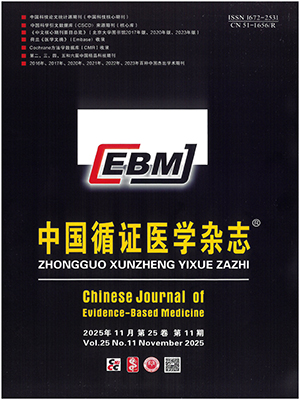| 1. |
Torre LA, Bray F, Siegel RL, et al. Global cancer statistics, 2012. CA Cancer J Clin, 2015, 65(2):87-108.
|
| 2. |
張歌, 周印, 劉榮波. MRI、MDCT檢測腎癌下腔靜脈癌栓及癌栓侵犯血管壁價值的系統評價. 中國循證醫學雜志, 2013, 13(1):21-25.
|
| 3. |
Bhatt JR, Finelli A. Landmarks in the diagnosis and treatment of renal cell carcinoma. Nat Rev Urol, 2014, 11(9):517-525.
|
| 4. |
Brocato J, Chervona Y, Costa M. Molecular responses to hypoxia-inducible factor 1alpha and beyond. Mol Pharmacol, 2014, 85(5):651-657.
|
| 5. |
Rohwer N, Zasada C, Kempa S, et al. The growing complexity of HIF-1alpha's role in tumorigenesis:DNA repair and beyond. Oncogene, 2013, 32(31):3569-3576.
|
| 6. |
Medina V, Aparicio G, Santamarina CI, et al. Searching for Hif1-alpha interacting proteins in renal cell carcinoma. Clin Transl Oncol, 2012, 14(9):698-708.
|
| 7. |
那磊, 吳斌. N F-κB p65和HIF-1α在腎透明細胞癌中的表達及意義. 中國醫科大學學報, 2014, 43 (6):519-522.
|
| 8. |
嚴新彥, 況應敏. G6PD和HIF-1α在腎透明細胞癌中的表達及其意義. 昆明:昆明醫科大學, 2014.
|
| 9. |
李培勇, 辛軍, 伍佰聰, 等. HIF-1α、MMP-9、MVD在腎細胞癌中的表達及臨床意義. 重慶醫科大學學報, 2013, 38(2):151-154.
|
| 10. |
王子夜, 周玉林. PAX2和HIF-1α在腎透明細胞癌中表達相關性的臨床意義初步探討. 安徽:安徽醫科大學, 2013.
|
| 11. |
舒博, 申鈞, 陳鵬, 等. HIF-1α和P53 蛋白的表達對腎透明細胞癌預后的影響. 現代泌尿外科雜志, 2010, 15(6):435-439.
|
| 12. |
郝天春, 周林玉, 汪小勇, 等. HIF-1α和CXCR4在腎透明細胞癌中的表達. 安徽醫科大學學報, 2010, 45(2):168-171.
|
| 13. |
魏澎濤, 喬保平. 腎細胞癌中缺氧誘導因子-1α、2α的表達及與血管生成的關系. 鄭州:鄭州大學, 2007.
|
| 14. |
李曉峰, 陳仕平. HIF-1α在腎細胞癌中的表達及其與腫瘤血管生成的關系. 福州:福建醫科大學, 2005.
|
| 15. |
Ke Q, Costa M. Hypoxia-inducible factor-1 (HIF-1). Mol Pharmacol, 2006, 70(5):1469-1480.
|
| 16. |
Song X, Liu X, Chi W, et al. Hypoxia-induced resistance to cisplatin and doxorubicin in non-small cell lung cancer is inhibited by silencing of HIF-1alpha gene. Cancer Chemother Pharmacol, 2006, 58 (6):776-784.
|
| 17. |
Wong CC, Zhang H, Gilkes DM, et al. Inhibitors of hypoxia-inducible factor 1 block breast cancer metastatic niche formation and lung metastasis. J Mol Med (Berl), 2012, 90(7):803-815.
|
| 18. |
Thapa D, Kang Y, Park PH, et al. Anti-tumor activity of the novel hexahydrocannabinol analog LYR-8 in Human colorectal tumor xenograft is mediated through the inhibition of Akt and hypoxia-inducible factor-1alpha activation. Biol Pharm Bull, 2012, 35(6):924-932.
|
| 19. |
Kato M, Yamamoto S, Takano M, et al. Aberrant expression of the mammalian target of rapamycin, hypoxia-inducible factor-1alpha, and glucose transporter 1 in the development of ovarian clear-cell adenocarcinoma. Int J Gynecol Pathol, 2012, 31(3):254-263.
|
| 20. |
Coppin C, Kollmannsberger C, Le L, et al. Targeted therapy for advanced renal cell cancer (RCC):a Cochrane systematic review of published randomised trials. BJU Int, 2011, 108(10):1556-1563.
|
| 21. |
Oladipupo S, Hu S, Kovalski J, et al. VEGF is essential for hypoxia-inducible factor-mediated neovascularization but dispensable for endothelial sprouting. Proc Natl Acad Sci USA, 2011, 108(32):13264-13269.
|
| 22. |
Hayes DF. Bevacizumab treatment for solid tumors:boon or bust? JAMA, 2011, 305(5):506-508.
|
| 23. |
莊乾元, 劉飛, 陳先國, 等. 抗血管生成藥物治療晚期腎癌療效的Meta分析. 中國循證醫學雜志, 2010, 10(6):688-692.
|
| 24. |
Motzer RJ, Escudier B, Oudard S, et al. Efficacy of everolimus in advanced renal cell carcinoma:a double-blind, randomised, placebo-controlled phase Ⅲ trial. Lancet, 2008, 372(9637):449-456.
|




